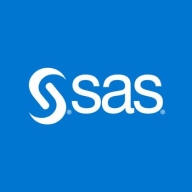

SAS Visual Analytics and Hubble are competing in the data analytics space. Hubble seems to have an advantage in ease of use, while SAS Visual Analytics provides more comprehensive features, offering value for the price.
Features: SAS Visual Analytics offers advanced analytics capabilities, including robust data mining and machine learning tools. It excels in providing rich visualizations and report customization options. Hubble delivers strong real-time reporting capabilities and seamless ERP integration, targeting financial and operational analytics needs with its focus on specific industries.
Room for Improvement: SAS Visual Analytics could enhance its user interface to be more intuitive for non-technical users, streamline its deployment process for quicker integration, and reduce initial setup complexities. Hubble could improve the depth of analytics features, expand beyond core ERP systems for broader data handling, and enhance its customization options for more tailored reporting solutions.
Ease of Deployment and Customer Service: SAS Visual Analytics provides both cloud and on-premise deployment options, supported by extensive training resources, but the deployment can be complex due to its broad functionalities. Hubble's cloud-based deployment encourages easier implementation with rapid system integration and straightforward customer service, making it appealing for minimal disruption.
Pricing and ROI: SAS Visual Analytics may involve higher setup costs due to its comprehensive capabilities, impacting initial ROI; however, it provides significant long-term insights. Hubble offers a budget-friendly setup with quicker returns, emphasizing cost efficiency and value optimization in existing ERP systems. The pricing differences highlight Hubble's accessibility for mid-sized enterprises, while SAS Visual Analytics offers a substantial solution for those requiring extensive analytics capabilities with a stronger ROI over time.
| Product | Market Share (%) |
|---|---|
| SAS Visual Analytics | 3.4% |
| Hubble | 1.0% |
| Other | 95.6% |

| Company Size | Count |
|---|---|
| Small Business | 13 |
| Midsize Enterprise | 8 |
| Large Enterprise | 19 |
SAS Visual Analytics is a data visualization tool that is used for reporting, data exploration, and analytics. The solution enables users - even those without advanced analytical skills - to understand and examine patterns, trends, and relationships in data. SAS Visual Analytics makes it easy to create and share reports and dashboards that monitor business performance. By using the solution, users can handle, understand, and analyze their data in both past and present fields, as well as influence vital factors for future changes. SAS Visual Analytics is most suitable for larger companies with complex needs.
SAS Visual Analytics Features
SAS Visual Analytics has many valuable key features. Some of the most useful ones include:
SAS Visual Analytics Benefits
There are many benefits to implementing SAS Visual Analytics. Some of the biggest advantages the solution offers include:
Reviews from Real Users
Below are some reviews and helpful feedback written by PeerSpot users currently using the SAS Visual Analytics solution.
A Senior Manager at a consultancy says, “The solution is very stable. The scalability is good. The usability is quite good. It's quite easy to learn and to progress with SAS from an end-user perspective.
PeerSpot user Robert H., Co-owner at Hecht und Heck GmbH, comments, “What I really love about the software is that I have never struggled in implementing it for complex business requirements. It is good for highly sophisticated and specialized statistics in the areas that some people tend to call artificial intelligence. It is used for everything that involves visual presentation and analysis of highly sophisticated statistics for forecasting and other purposes.
Andrea D., Chief Technical Officer at Value Partners, explains, “The best feature is that SAS is not a single BI tool. Rather, it is part of an ecosystem of tools, such as tools that help a user to develop artificial intelligence, algorithms, and so on. SAS is an ecosystem. It's an ecosystem of products. We've found the product to be stable and reliable. The scalability is good.”
We monitor all Data Visualization reviews to prevent fraudulent reviews and keep review quality high. We do not post reviews by company employees or direct competitors. We validate each review for authenticity via cross-reference with LinkedIn, and personal follow-up with the reviewer when necessary.